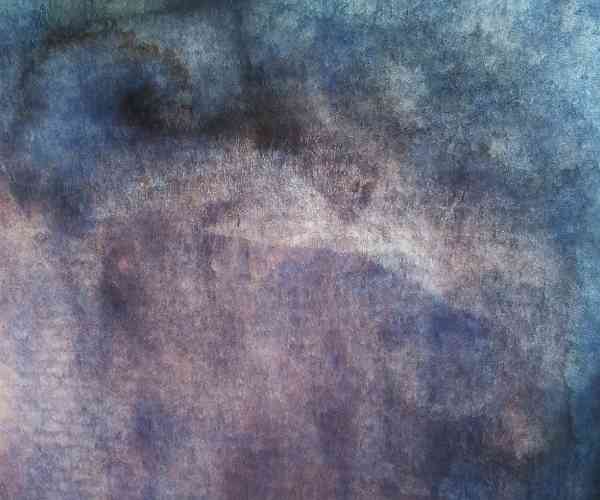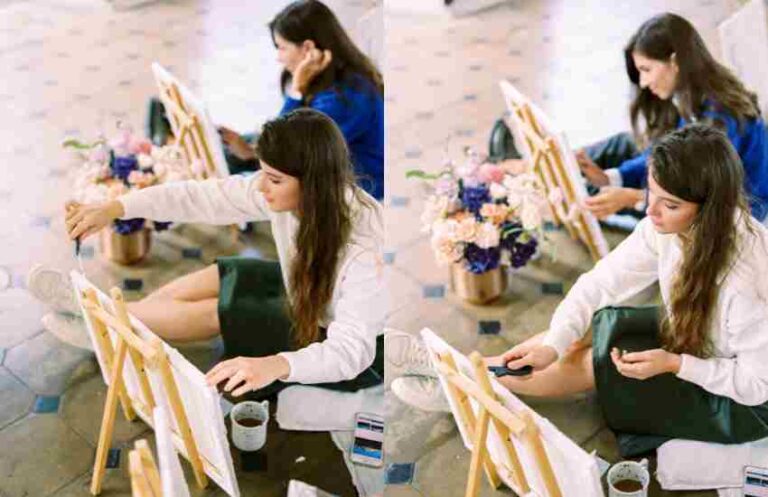The changes in political and social conditions across different time frames can be appreciated and understood through the various art movements that arose during that specific time period, and to decipher their evolving nature the sociocultural context of those eras serves as a fundamental backdrop.
Movements in art often accumulate together, encapsulating a certain prevalent phase and how society used to operate during that particular stretch in time. Be it the renaissance period, or modern expressions of art, political turbulence, popularity of specific social causes and many civil rights movements shaped the whole narrative and viewpoint of humanity.
To give an example, the renaissance movement within art can be regarded as an important sign of someone helping humanity transition into a more progressive and rational mindset as it originated during a were western civilization was overcoming political and religious tyranny. Movements in art nowadays are closely related to political movements because as we progress politically, great achievements and changes are celebrated among the people, which in turn motivates artists to create a form of expression that can encompass the transformation.
The examination of how various art movements tackle political issues and conceptualize social change offers valuable points of view regarding their significance in the history of civilization. Majorities of these trends can be observed parallel, they depict issues relevant to thier region, and such movements serve to criticize the regimes they are a part of, or the systems and ideas that are dominant in society.
So, how do art movements assist in creating a political atmosphere and what role do they play in the social environment.
Art movements like political parties arise as a reaction to a foreign force or an outside influence.Let’s take for instance the Renaissance art which was a direct shift towards humanism and individualism. This movement matched with political and social change by rejecting religious features and focusing mostly on the human being and the human sight.
In this context, artists like Leonardo da Vinci and Michelangelo focused on the ideas of self-attainment and capacity of humanity, which was in line with the transformation in culture that appreciated what man goes through and rationality. In this era, the interest in ancient Rome and Greece was profound and the desire to develop science and philosophy flourished.
Case Study: Dadaism
Dadaism came into being as a response to the consequences of World War I as an art movement that was alarming. It also aimed at revolting against traditional forms of artistic representation and critiquing art politically.
The Dada movement derived its concepts from anti-art and nonsense and began to subvert the customs and standards of the art world. Dadaists employed their art to question the norms and values in place while showing their discontent with the war and its implications on the society.
Some of the renowned people associated with this movement include Marcel Duchamp whose fountain epitomized the movement as an artivist which means involving art as a way of critiquing socio-political issues.
Case Study: The Harlem Renaissance
The beginning of the 20th century saw the birth of the Harlem Renaissance which hailed as a cultural and intellectual movement of immense significance. The movement was core in the realization of the politics of identity and the celebrating the roles of African American artists and intellectuals alike.
The Art movement emerged during the roaring twenties in the New York city, specifically Harlem. The time served to clash topics of race, social identity, and social issues out of which art emerged as a primary means to synch the concepts. This included artists such as Langston Hughes, Zora Neale Hurston, and Aaron Douglas who sought through their art to talk about the complexities of the African American life and culture.
The entire notion around the Harleem renaissance served well in the conversation around cultural identity and the conception of the African Americans role in it. The movement otherwise was effective in discarding stereotypes and introducing new ways to artistic expression while serving as media for political criticism.
Art Movements and Their Role in Society
Aspects of Political Modernism and Its Context
Surrealism and Cubism kept pushing the barriers of how art was envisioned and expressed in a more modern and contemporary way
Cubism can be described as a movement started by Pablo Picasso and Georges Braque. In simple terms, it shattered everything into parts. This Artistic style broke myriad Compositions into smaller pecies and put Puzzle pieces together in a different and more versatile manner that Which ensured wider appeal as well as Modernity of the Final Product. According to many, it represented a 4-dimensional world because not only did it reflect nature, but rather an alternate reality altogether. It served as an attack to classical art and was rooted deeply within the social transformations occurring during the early twentieth century.
André Breton and Salvador Dali were the leaders of this movement. Surrealism wanted to go beyond the barrier of the imagination and into the realms of dreams. One of the methods used even obtained indirect Political messages by depicting weird and illogical imaginations. The approach advocated for active participation in the artistic endeavors revolving around the changing conditions of the social and political environment. It sought for change in the perception of reality.
Meme Creation has almost become an art of its own nowadays. And perhaps it could be argued that Cubism and Surrealism were the stepping stone. Both styles of art have been critically commended for their socio-political movements as well. As an Art form that Cubism and Surrealism took simply did not existed before and today it remains hard to imagine a world with political artifacts devoid of all its other accompanying movements too.
The Modernism Theories were believed to have emerged in response to the issues with Postmodernism as it showcased a new level of exploration enabling the world to advance and to push the boundaries even further.
Photography has been used by artists, including Cindy Sherman, to challenge established concepts of identity and gender. These include Sherman’s works which are constructed as self-portraits, whereby she attempts to subvert the conventional stereotype of identity politics.
Jean Michel Basquiat, the foremost postmodern artist, for example, used harsh, bold, and unrefined paintings to portray issues related to race and social classes. Often, his works contain and critique text and images which address power relations and the conditions of oppressed groups.
Postmodernism opened the doors for artists to politicize their art and to advocate for change in societies using multiple and novel methods. This movement advocated for more variety in voices and perspectives in contrast to the existing ones in the society.
Contemporary Art and Political Activism
Contemporary art in the 21st century still plays a significant role in addressing political issues and social criticism through its criticism engagement. Contemporary artistic practice has witnessed the rise of artivism, which is a blending of art and activism, as its fundamental component.
An interesting form of performance in the modern practice of contemporary artists is street art, which transforms urban areas into large performance venues aimed at social and collective movements. For instance, Banksy’s street art which addresses issues like war, consumerism and income inequality sparks discussions within the wider society and gets the public interested in the messages being sent.
Contemporary artists have further broadened the scope of political engagement by inciting digital activism, which refers to the use of the Internet, social media or other communication technologies to make art targeting a specific social or political purpose. Meshing social media and art greatly increases exposure to various ideas and issues, helping garner support for a particular cause. Campaigns held online and essays generated by AI illustrate the intersection of technology and artistic movements aimed to reinforce political change that emerges in many areas.
Present art clearly shows how art practices do not cease to develop and respond to modern-day challenges which is perfectly suitable reflecting the criticism of politics in the modern times.
Art & Politics
Art as Protest
Historically, Art has been utilized as a protest art, for political free works, and other works that aid in turning the tides of history. Artists from every generation have used their craft to depict the state of events and deconstruct systems of power that are unjust.
“Guernica” by Pablo Picasso is excellent art that is a form of protest. This piece was born in reaction to the Spanish civil war and the bombing of Guernica, and it vividly conveys the devastating impact of war and serves as a condemnation of violence and humiliation.
The Great Wall of Los Angeles, a mural created by Judy Baca, shows how art can be harnessed to respond to social issues and help outcast communities. The artwork, which is more than a mile long, portrays the evolution of California starting with the native empires and going up to the present day, thereby not only adding to history but also adding substance to the story that goes against history written only by the victors.
These examples illustrate the function of art movements in shaping society and their ability to tackle political and promote social issues.
Government Censorship of Art
Political regimes have often tried to repress or ban certain art movements to prevent opposition and maintain existing power structures.
In the time of the Soviet Union, the government attempted to restrict abstract expressionism since it was viewed as a threat. Social realism was sanctioned as the officially endorsed artistic style and aimed at controlling the kind of artistic expression and its objectives to suit politics.
While modern art was dismissed as “degenerate” by the regime in Nazi Germany because it failed to meet their political requirements. The Nazis’ determination to stamp out expressionism or cubism was because they wished to limit the scope of ideas and healthy contrariness.
Question: What are art movements?
Answer: To put it simply art movements are an artists collaborated attempt at trying to put forth a political or social idea or concept through a unique and artistic medium. Such movements are born either during a political climate or during a change in society, which serves as an answer to the era. Every movement has a sole idea or style that sets it apart from other movements and bases itself into the social and political factors of the time they were conceived in.
Question: What is the connection between art movements and political or social issues?
Answer: Art movements mirror society’s evolution, dissent and discourse — the very core dynamics of a particular epoch. They recreate and critique contemporary socio-political events such as social protests, regimes. For instance, Harlem Renaissance focused on the themes of racial discrimination and justice, while Dadaism questioned the war and its meaning with the language structures.
Question: Which art movements are known for their political messages?
Answer: Art Movements have been infused with Political messages throughout History. Some of the’re listed below.
Dadaism first emerged in WW1 as a response to the absurdity and chaos of the war while engaging in artivism against the societal and artistic norms.
The Harlem Renaissance focused on the African American identity and experience, the social race needed and gradually altered the general understanding of race relations and equality.
Surrealism has made use of dream-like and bizarre imagery in order to achieve a critique of society, the subconscious, and political or social change providing an exploration of society. This was accomplished by creating profound art pieces.
Why do art movements need to be researched?
Art movements play a crucial impact in politics and society, and the change which art causes in society and politics I deemed to be integral. This’s the reason these movements exist; they show and explain to us the behavior of artists in regard to political and social issues. More importantly, these movements show and help one understand that art is a medium through which change can be effected.
Conclusion
Summary of Key Points:
An art movement is more than the paint and brushes but rather the analysis of how the artistry and political or social narratives collided, from the Renaissance to now these movements have driven change as well as development and critique which speaks volumes to the time performed in.
Final Thoughts:
Learning about different art movements opens one’s ideas of art and while engaging with these movements assists one further explore how art can function as a source of change for one’s social and political view. It also helps with understanding the relevance of art emphasizing why one should be engaged with art and how people were previously engaged with art.
References
Include academic sources, art history studies, and articles that provide deeper insights into the intersection of art movements with political issues and social change. Consider referencing:
- Scholarly articles on art history and movements.
- Books on specific movements like Dadaism and the Harlem Renaissance.
- University studies on the impact of art on societal and political change.
- Reputable sources like Wikimedia Commons provide visual examples and historical context.
More Post
- Globalization of Contemporary Art: Trends Unveiled
- Art Valuation Today: Financial Insights in Current Movements
- What Rising Trends: New Frontiers in Digital Art Movements
- 25 Floral Canvas Painting Ideas for Botanical Beauty: A Guide to Crafting Your Garden Masterpiece
- 25 Canvas Painting Ideas Inspired by the Outdoors



